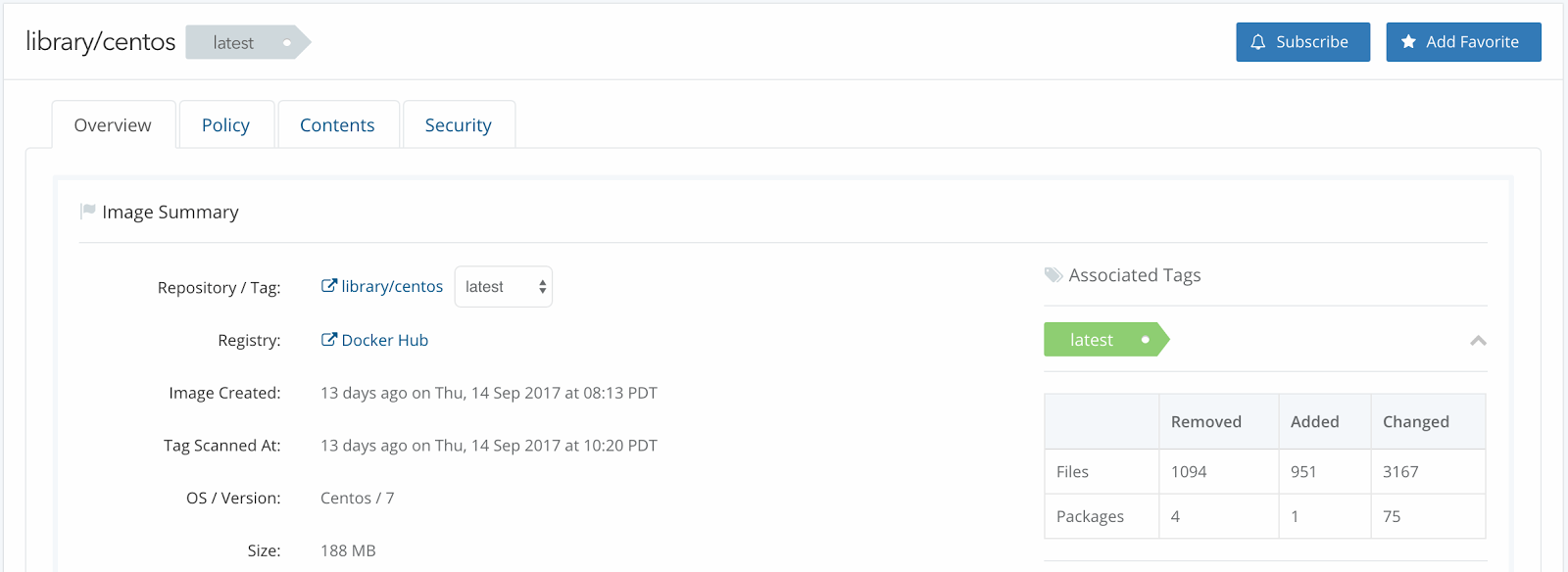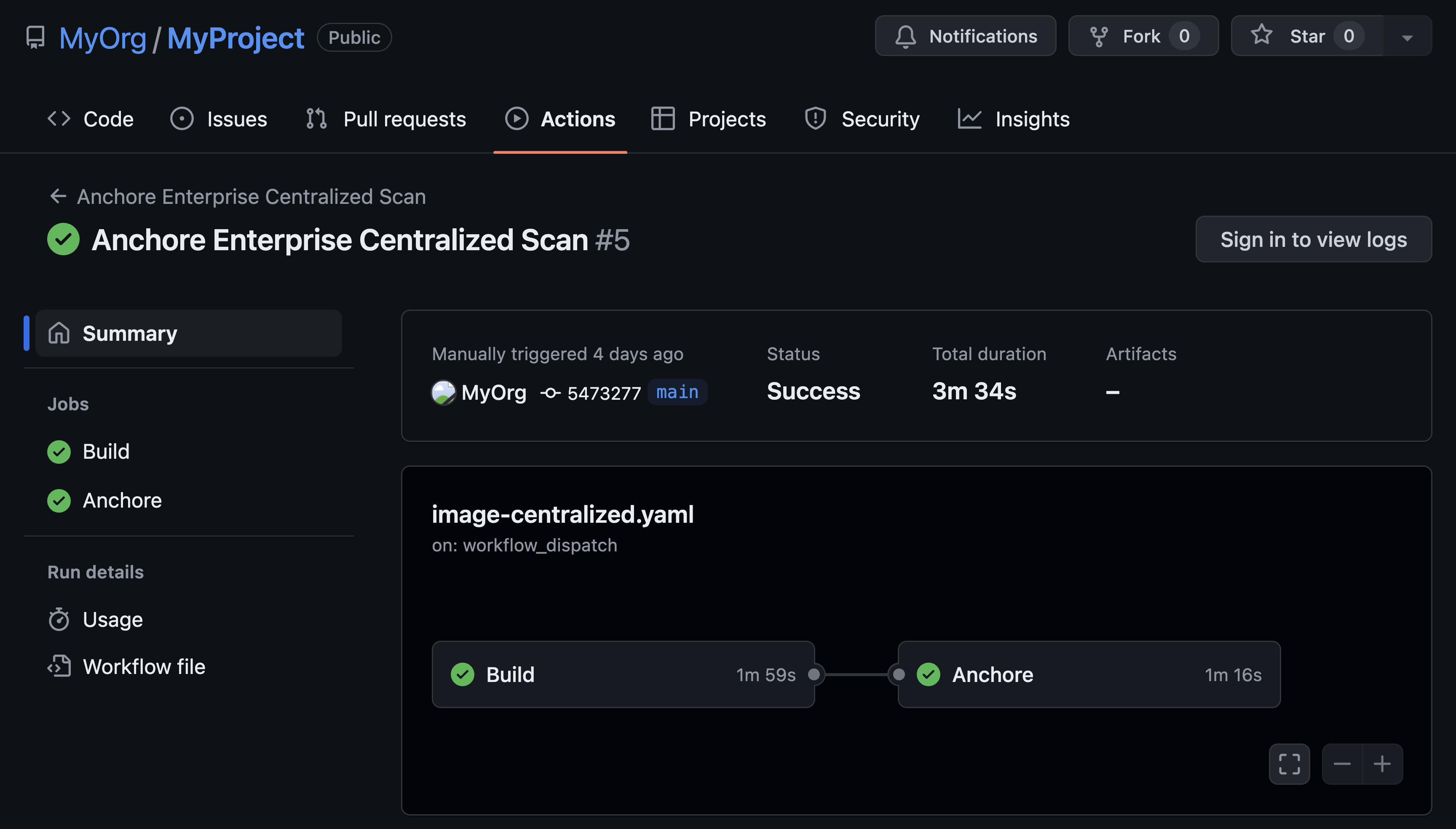In our last blog, we talked about how quickly different repos respond to updates to their base images. Any changes made by the base image will need to be implemented in the application images built on top of it, so updates to popular base images spread far and, as we saw from the last blog, quickly.
The only type of update we have covered so far in this series of blogs is security updates. However, that is only one part of the picture; package updates may contain non-security bug fixes and new features. To gain some insight into what is being changed in these updates, we have broken down exactly what packages change for a few of the more popular operating system images.
One interesting time to look at package differences is when the operating system gets updated to a new version.

Looking at the overview tab for library/centos:latest, when it just got updated to version 7.4, the Navigator shows in the chart on the righthand side that there were many changes with this update. Shown below is a breakdown of which packages have been updated since last September. Only a portion of the packages are shown, you can find the rest in the link below.

Focusing in on just that most recent update, we see that 80 of the 145 packages have been updated. The image from Sep 13th was CentOS 7.3, while the one from Sep 14th is CentOS 7.4. Looking into some of the changes, bash, like many others, received backports of bug fixes. Other packages were new additions, such as elfutils-default-yama-scope, while one, pygobject3-base, was removed from the image. In terms of CVE/Security updates, this was an ineffectual update; a quick check of the security tab of both versions (7.3, 7.4) shows that there were no changes in CVEs between the two.
Click the button below to access the full spreadsheet with all package updates for 6 popular operating systems.
In the spreadsheet, you’ll see Alpine stands out in terms of image size and reduced package count. Having more packages means having more packages to maintain. Even if Alpine were to update almost all of its 11 packages, as it did on May 25th, there would not be as many changes as a standard Debian update, such as the one on June 7th, where 25 of 81 packages were updated. There is a trend towards lightweight images, and the appeal of simpler updates might be one reason behind it. Among public repositories, Alpine is growing its share of usage as a base image. Other base operating systems are beginning to including slim versions of their containers, such as Debian, which has a slim version of each of its releases as well as Oracle and Red Hat.
Comparing the sizes of the two Debian tags included in the spreadsheet, stretch and stretch-slim, we see that the slim version is about half the size of the original, 95 MB vs 53 MB. The trend goes across releases too; Debian Stretch (Debian 9) images are around 90 MB while Jessie (Debian 8) images are around 120 MB. Ubuntu 16.04 is around 120 MB while 17.04 is around 90 MB. One repository not slimming its images is CentOS. It does not currently include slim versions, even though Red Hat Enterprise Linux, from which CentOS is based, has a slim image known as RHEL Atomic.
Part of slimming down containers is removing packages that are not necessary. In some instances, packages are included that are arguably not required in the context of a container, such as device-mapper or dracut. This harkens back to a previous blog, where we discussed how containers are often being used as micro-VMs rather than microservices. The packages listed above, among others, lend themselves to running a full machine, rather than running just a single application. Removing these extra packages is not as simple as it initially appears. For example in the CentOS 7 image dracut, which builds initramfs images to boot an OS, is pulled in as a requirement by kmod, which provides an infrastructure for kernel module loading, which is pulled in by systemd. We see many similar examples in the traditional Linux vendors’ images, where the package management system was designed before the advent of containers. This is a topic we will revisit in a future blog.
Even though smaller base images require less maintenance and storage, having fewer packages means less functionality. Most application images built on top of Alpine require that users add many more packages onto the base image so application images are often significantly larger than the 4MB base image. But having the choice to add to an image rather than working out how to remove packages certainly simplifies maintenance for the developer and allows for a reduced attack surface. In our next blog, we will look at some popular application images that are available based on multiple distributions to see how the image size, bug count and update frequencies compare.


